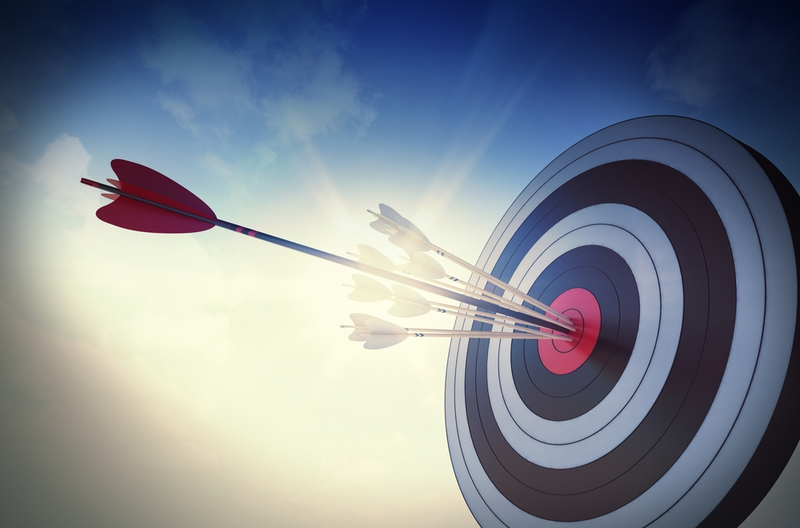ATD Blog
Better Science for Better Learning: Some Goals Work Better Than Others
Tue Dec 31 2019

There are many ways to write learning goals.
As an instructional designer, you often ask your learners to set goals that specify what they’ll be able to do and by when they’ll be able to do it. That’s a respected formula for goal setting, but it doesn’t always lead to optimum results.
Try this thought experiment:
Imagine that you’re a tennis coach. One of your students can return only half the serves you send over the net, so you’ve asked her to set a learning goal. She brings you four possible goals and asks which will help her most. What do you recommend?
Within two weeks, she’ll be able to return six out of 10 serves.
Within two months, she’ll be able to return 15 out of 20 serves.
Within two months, she’ll miss 30 percent fewer serves than your other students.
Within two years, she’ll be able to return 180 out of 200 serves.
Did you jump right into comparing those numbers? If so, you’re missing something!
“Mastery-approach” goals promote successful learning.
Psychologists organize goals according to two questions. First they ask, “Is this a mastery goal or a performance goal?” A mastery goal is measured as a predefined level of accomplishment such as, “The worker will be able to mill 100 steel rods per hour.” But a performance goal is measured against the accomplishments of other people, such as, “The worker will be able to mill more steel rods per hour than 60 percent of his co-workers.” As instructional designers, we invoke mastery goals when we grade assessments according to specified objectives, but we invoke performance goals when we grade on a curve.
Psychologists then ask, “Is this an approach or an avoidance goal?” The examples I wrote in the previous paragraph measure what the learner will be able to do (“mill steel rods per hour”) so they fall into the approach subcategory. In contrast, the avoidance subcategory measures the learner’s incompetence, either in relation to specified objectives (“break no more than 10 steel rods per hour”) or to the incompetence of other people (“break fewer steel rods per hour than fellow workers”).
Research suggests that mastery-approach goals lead to better outcomes. In other words, we should encourage learners to write goals that relate to objectives achieved, not to failure or to comparison with other people. So, in our thought experiment, we should eliminate the tennis goal that invokes avoidance (missed serves) and performance (comparison to other students). Three possible goals remain:
Within two weeks, she’ll be able to return six out of 10 serves.
Within two months, she’ll be able to return 15 out of 20 serves.
Within two years, she’ll be able to return 180 out of 200 serves.
How do we choose among them?
“Moderate stretch” goals promote motivation and completion.
Long-term or difficult stretch goals set the bar high. There’s nuance about when a “Hail Mary” stretch can help or hurt goal achievement. But generally you can rely on common sense. For our tennis player, the two-year goal is a reach, both in difficulty and in time. A goal this arduous may frustrate her and reduce her motivation. On the other hand, the two-week goal is easy and won’t generate much improvement or reward. It’s the two-month moderate stretch that hits a sweet spot, both achievable and a challenge. Chances are that it will motivate the student to practice diligently and then, on completion, provide a sense of accomplishment that could lead her to reach for new stretches in the future.
We’ve identified the goal most likely to help our tennis player: “Within two months, she’ll be able to return 15 out of 20 serves.” We got there in two steps:
1. We discarded goals that were not written in mastery-approach format.
2. From those that remained, we chose a moderate stretch.
Apply these techniques broadly.
This advice goes far beyond tennis instruction. You can apply it wherever your company uses goals to drive improvement: skills acquisition, competency achievement, even sales quotas. Are your managers helping their direct reports grow with mastery-approach goals? Are your sales executives risking business results by demanding competitive, performance-avoidance quotas? Wait a minute! Are you undermining your own work by designing tests that are scored on a curve?
To learn more, look into Achievement Goals in the Workplace for additional depth around mastery and performance goals, and read Gamification of Task Performance With Leaderboards: a Goal-Setting experiment for useful ways to include competition (for example, performance goals) without weakening goal results.
